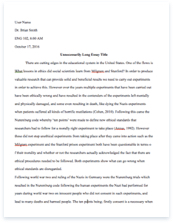Language and Structure in ”Little Boy Crying”

- Pages: 4
- Word count: 857
- Category: Language Poetry Structures
A limited time offer! Get a custom sample essay written according to your requirements urgent 3h delivery guaranteed
Order NowComment on the poet’s language and structure to ideas in one of the following: ‘Little Boy Crying’, ‘Caged Bird’ and ‘Carpet Weavers-Morocco’
In ‘Little Boy Crying’, Mervyn Morris describes the punishing of a boy by his father. The poet raises and develops key ideas throughout the poem, depicted by the language and structure used in the poem. Techniques such as enjambment and metaphors help Mervyn Morris to develop these ideas, and the audience can develop a general idea of the message the poet is trying to deliver.
Mervyn Morris utilizes metaphors and other poetic devices to expand on his ideas. One of the key ideas that Mervyn Morris suggests is how a child may not always be innocent, but can be manipulative as well. The main line that shows us this is line 6, ‘You stand there angling for a moment’s hint of guilt or sorrow’. The word ‘angling’ shows that the boy is waiting for a response from his father. This symbolizes that the boy is manipulative because it shows the boy is not crying genuinely; he is using his tears to get a response from the father. Other points that show us that the boy is manipulative is how the boy becomes vengeful as the poem progresses. Unlike an innocent child, the boy begins to plot revenge against his father. In line 10, we also see that the boy thinks that the father is going to submit soon, ‘Soon victim of the tale’s conclusion’. The word ‘soon’ shows that the boy thinks that he has done enough to make the father respond, which shows that the boy is manipulating the father so that the father will feel guilty.
The idea of manipulation is also further strengthened by how we can see that the boy makes the father the victim of the punishment, not himself, in line 10. We can also see that the boy is fully aware of how his father is feeling in line 17, ‘This fierce man longs to lift you, curb your sadness’ and in line 16, ‘Nor guess the wavering hidden behind that mask’. This means that the boy is able to manipulate the father, as he knows that the father wants to console him and he adds further pain to the father by crying. Another way the boy’s manipulation is shown is in line 15, where we can see that the boy’s tears are not entirely genuine, ‘The hurt your easy tears can scald him with’. This shows that the boy knows that crying will help him to get a response from his father, and the boy starts crying easily, showing the boys manipulation again. The poet also shows us that the child is manipulating the father by manipulating the reader as well. In the last line, ‘You must not make a plaything of the rain’ the poet makes it seem as if the only reason the boy was crying was because he was playing in the rain, but there are obviously deeper implications. The poet manipulates the reader into thinking about the poem, as how the child manipulates the father.
Another key idea Mervyn Morris raises in Little Boy Crying is how strong a relationship between a father and child can be. We can see this in how the boy becomes angry and hurt because of his father slapping him. This is seen in the opening stanza, where a lack of punctuation symbolizes that the boy is angry, as a person’s mind is usually racing and quick when they are angry. We can also see that the boy is hurt in line 2, where enjambment further emphasizes the word ‘hurt’. The enjambment also makes the rhythm messy, just as the boy’s thoughts are jumbled because he is upset. This response to the father’s punishment shows that the boy did not expect his father to slap him, which means that the father usually treats the boy with love.
From the fathers perspective, we can see the father loves the boy very much. The father is immediately pained by the child’s tears in line 15, ‘The hurt your easy tears can scald him with’. This shows that the boy’s crying hurts the father, and the word ‘scald’ shows that the father’s guilt for not consoling the child is turned into physical pain. We can also see that the father is also pained by having to not console the child so that his child will benefit as line 19 says, ‘But dare not ruin the lessons you should learn’. This shows that the father is willing to suffer so that his child can learn the lesson. The love the father conveys here enforces the idea of the bond between father and son.
Mervyn Morris uses a variety of poetic devices and utilizes the structure of the poem to help him to expand upon the ideas of a manipulative child and a strong bond between father and son. These ideas are developed throughout the poem and the reader can attain a strong idea on what Mervyn Morris is trying to say in Little Boy Crying.










